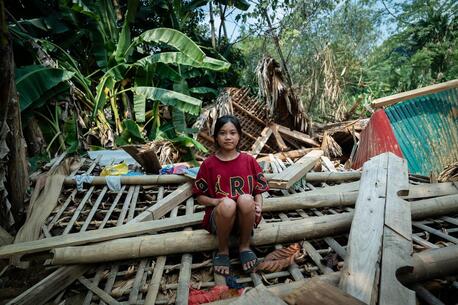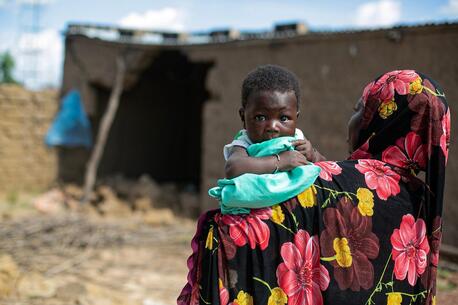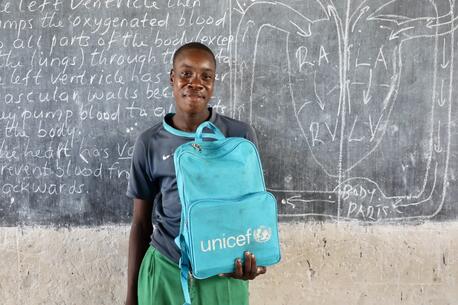
Climate Crisis in Kenya: A Journey Toward Resilience and Learning
UNICEF and strategic partners like Education Cannot Wait (ECW) are turbocharging efforts to connect the dots between climate action and education action.
Kenya sits on the front lines of the climate crisis. For young people like 17-year-old Mohamed, the very real impacts from prolonged droughts, floods and other climate hazards are creating massive roadblocks toward a better future.
"I had to drop out to work with my family in the rice field. I missed learning and meeting my friends," says Mohamed. "My father could not afford to buy food, books and other school items.”
Like many girls and boys his age, Mohamed's education was interrupted for several years. It wasn’t just poverty and hunger that pushed him from the classroom. It was also the plagues of locusts, the droughts, the floods and the million other factors that came together in a perfect storm to push his family, and many like them, toward the breaking point.
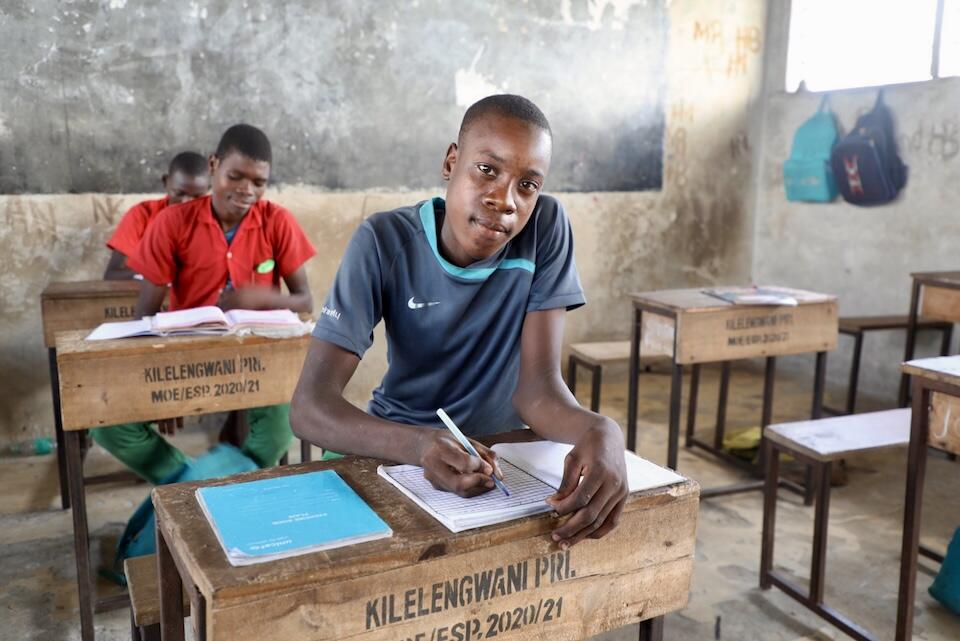
Kenya's prolonged drought has left more than 4 million people in need of humanitarian assistance
At least 4.35 million people in Kenya are in need of humanitarian support as a result of the longest drought in 40 years. This was made even worse when floods ripped through the countryside earlier this year, leaving a path of destruction and devastation in their wake.
In all, about 1.5 million school-aged children are at risk of dropping out of school. This adds to the 1.9 million children already out of school in Kenya's arid and semi-arid lands (ASAL).
To further compound the challenges, the educational and humanitarian needs in Kenya — and across the Horn of Africa — far outstrip the resources currently being provided. Recent estimates indicate that Kenya alone requires a total of $32.5 million to support its humanitarian education response.
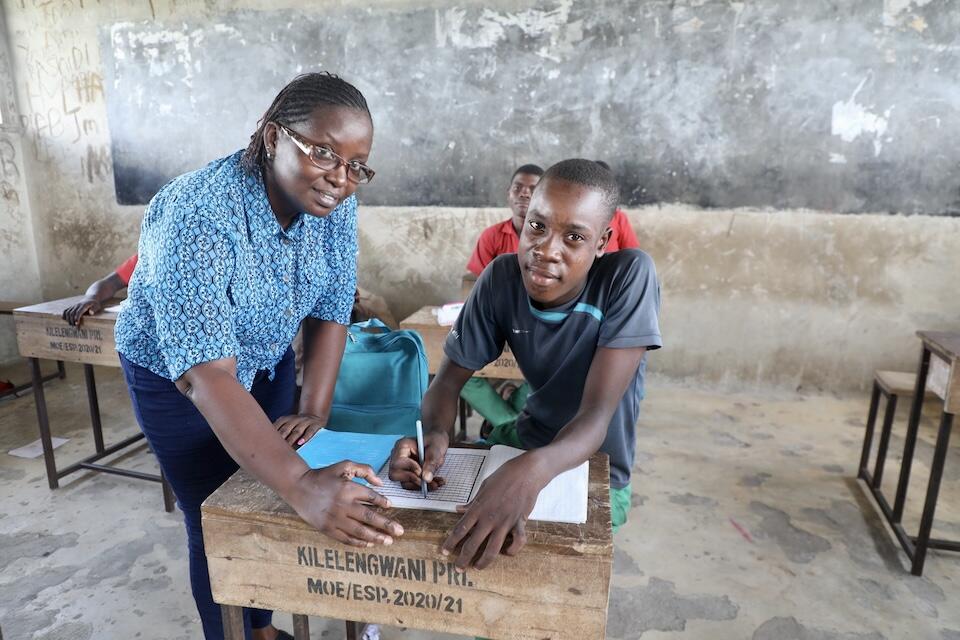
Innovative programs remove roadblocks to learning
In the face of adversity, Mohamed is finding new opportunities to reach his full potential.
With an innovative program delivered by UNICEF Kenya and its partner the Women Educational Researchers of Kenya (WERK), adolescents like Mohamed are now returning to learning with catch-up classes, back-to-school community initiatives and climate-resilient educational pathways that are removing roadblocks and presenting new opportunities to learn, grow and thrive.
The program is delivered through a $2 million First Emergency Response grant from Education Cannot Wait (ECW), the global fund for education in emergencies and protracted crises hosted by UNICEF.
The climate crisis is upending development gains and putting an entire generation at risk. — Yasmin Sherif, Education Cannot Wait Executive Director
ECW and its strategic partners including UNICEF are turbocharging efforts to connect the dots between climate action and education action.
“The climate crisis is upending development gains and putting an entire generation at risk. The very future of the human race is in the crosshairs. Last year was the warmest year on record, and devastating floods and prolonged drought in places like the Horn of Africa contributed to a rise in global food insecurity and displacement, while also straining household finances,” says Yasmine Sherif, Executive Director of Education Cannot Wait. “In all, 62 million crisis-affected children and adolescents across 27 countries have had their education disrupted by climate shocks since 2020. Girls are particularly at risk of dropping out of school or being forced into child marriage.”
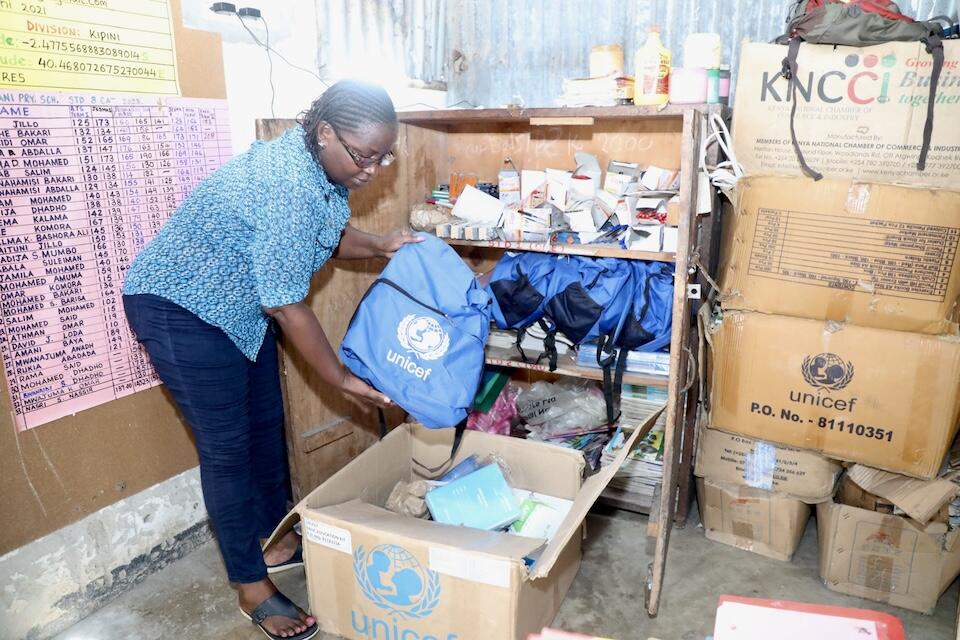
Climate hazards, early marriage and famine keep learners out of school
Across much of Africa, the educational pathways of many vulnerable children are often disrupted by climate hazards such as floods and droughts.
“For the past three years, we have struggled to keep learners in school; they are lured out of class by various challenges, including early marriages, famine, and the recent floods in this area," says Umuru Jalua, Head Teacher at Mohamed’s school, the Kilelengwani Primary School. "Most of the learners in this school cannot buy school items like books and pens and pay additional charges to facilitate their stay there. They come from very vulnerable families that struggle to meet their daily needs.”
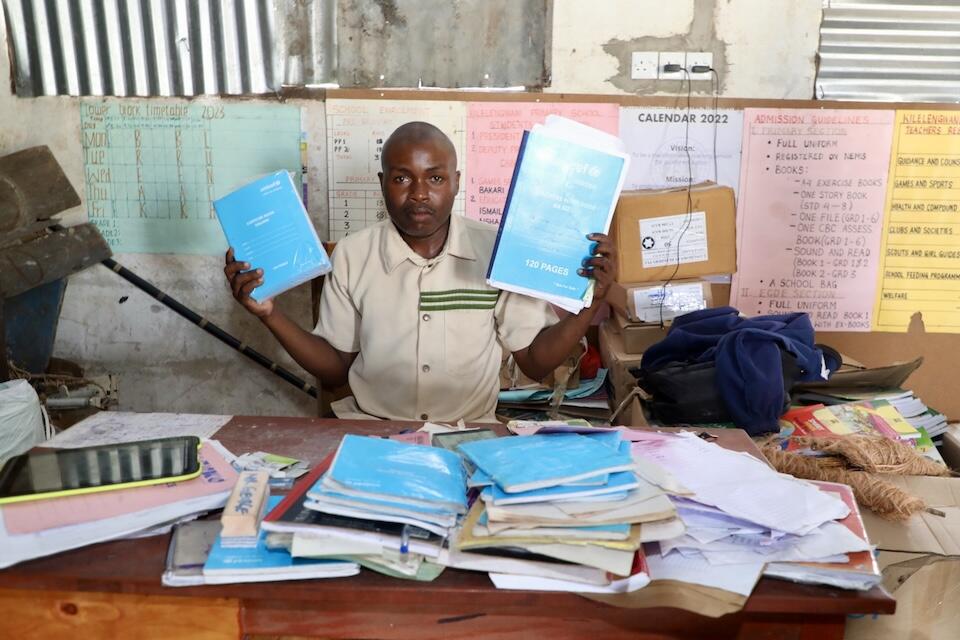
Cash incentives, mentorship and quality learning environments get children back into the classroom
Getting girls and boys like Mohamed back to learning is a challenge. Through the ECW investment, local partners are sensitizing communities and families on the value of education. By providing holistic education support – which includes cash incentives, mentorship and quality learning environments – they create a value proposition to get children back to the classroom.
Lack of water is another crucial challenge. As many as 460 schools have no water source, and over 1,800 rely on harvesting rainwater.
"We also had a challenge with harvesting rainwater for use by the learners, but with the new tank installation, we will be able to store enough water to last us a whole term," he said.
It’s about creating a whole-of-child solution to a whole-of-community problem.
The initiative includes a number of supports including sensitization on child protection issues, gender-based violence and psychosocial support.
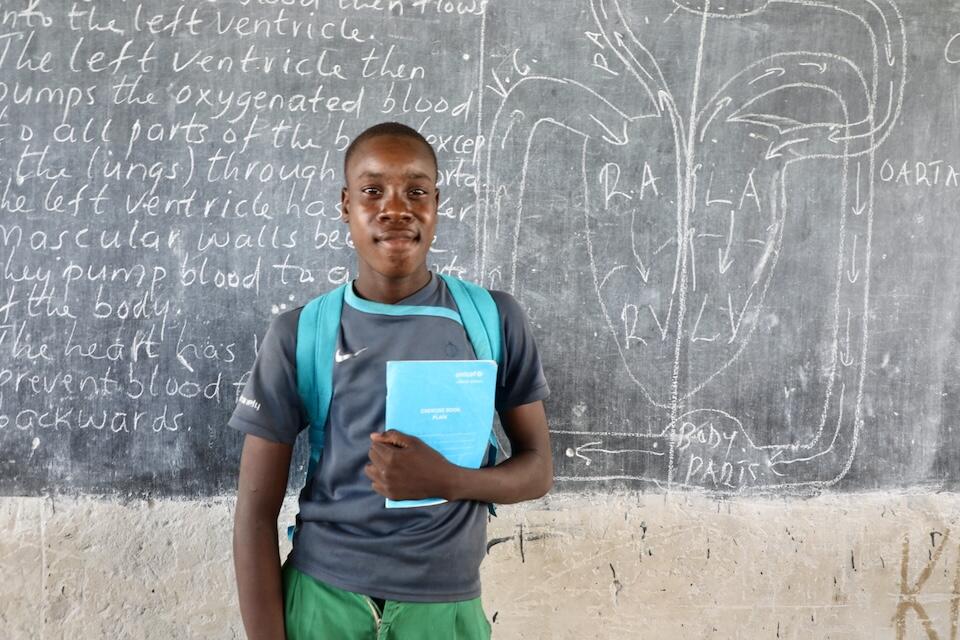
Back in school and full of hope
At 17, Mohamed is one of the older children in his sixth-grade class, but it hasn’t stopped him from dreaming big.
"I enjoy being in class now; I used to spend long hours working with my dad on the rice farm," says Mohamed. “Now, I am learning new things in class every day. My teachers are very supportive. They always check in and talk to me to give me the moral support to be in school. They gave me a new school bag, books, rulers, and pens. I want to teach others about science, especially my friends who are not yet back in school like me.”
Every child has the right to a quality education. UNICEF works with partners around the world to help children learn. Please donate today.
This story was written by Kent Page (Education Cannot Wait), and Lucas Odhiambo and Joy Wanja (UNICEF Kenya)
HOW TO HELP
There are many ways to make a difference
War, famine, poverty, natural disasters — threats to the world's children keep coming. But UNICEF won't stop working to keep children healthy and safe.
UNICEF works in over 190 countries and territories — more places than any other children's organization. UNICEF has the world's largest humanitarian warehouse and, when disaster strikes, can get supplies almost anywhere within 72 hours. Constantly innovating, always advocating for a better world for children, UNICEF works to ensure that every child can grow up healthy, educated, protected and respected.
Would you like to help give all children the opportunity to reach their full potential? There are many ways to get involved.



